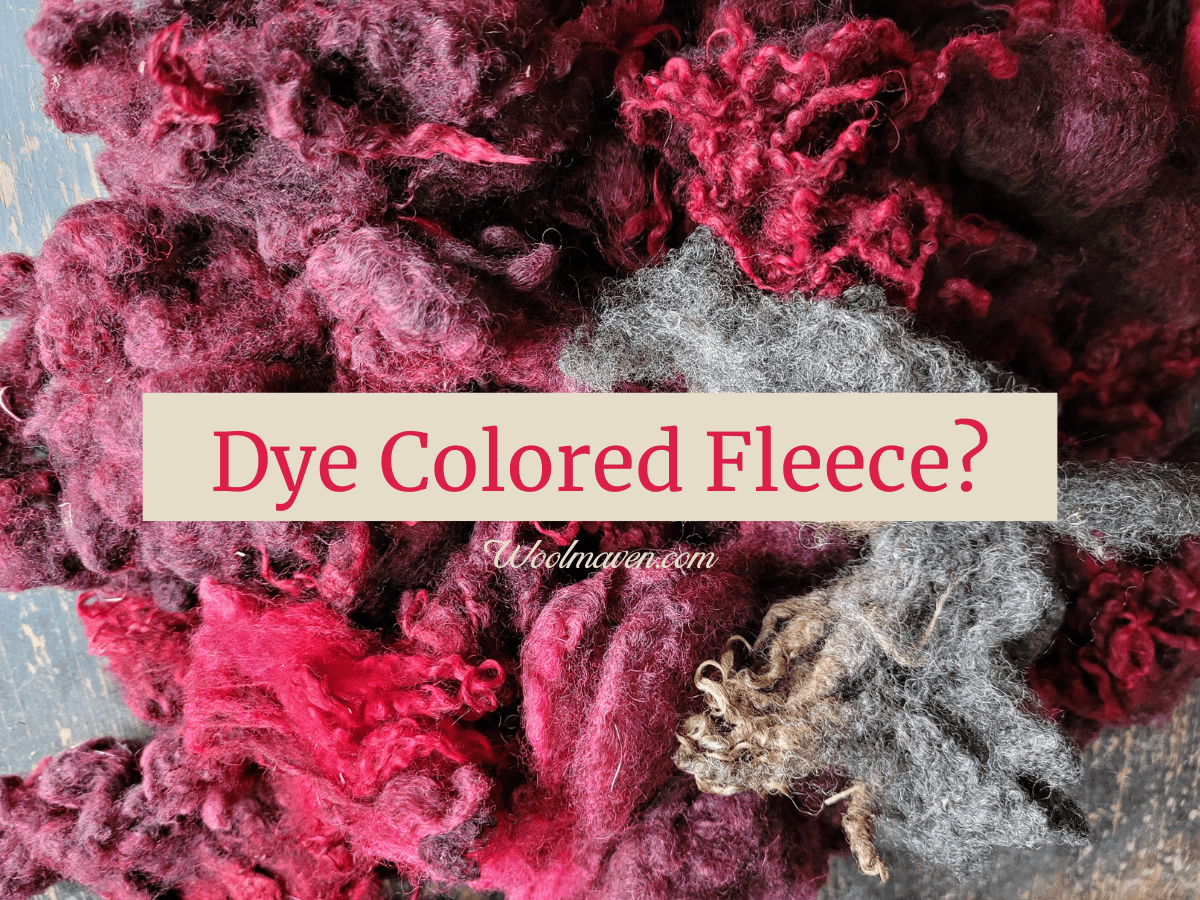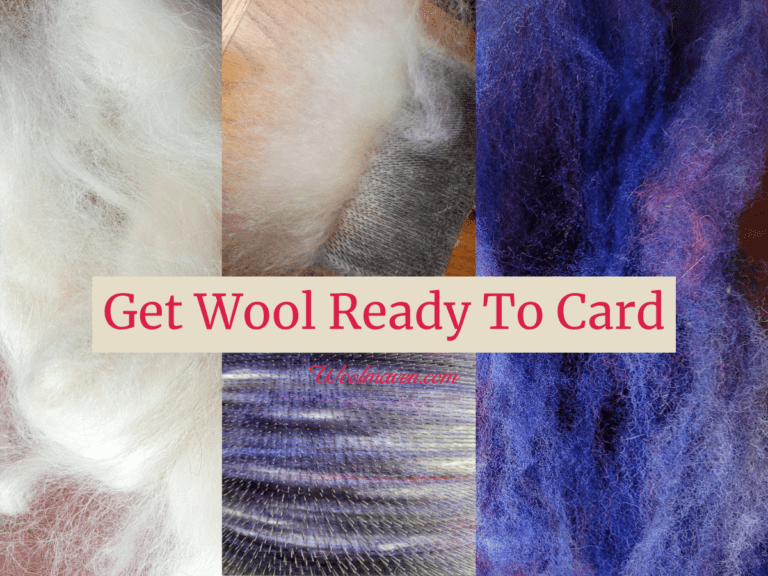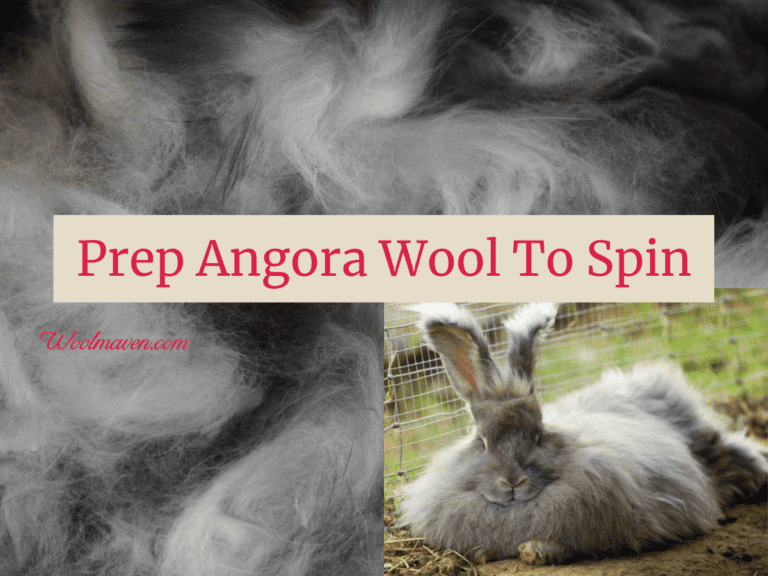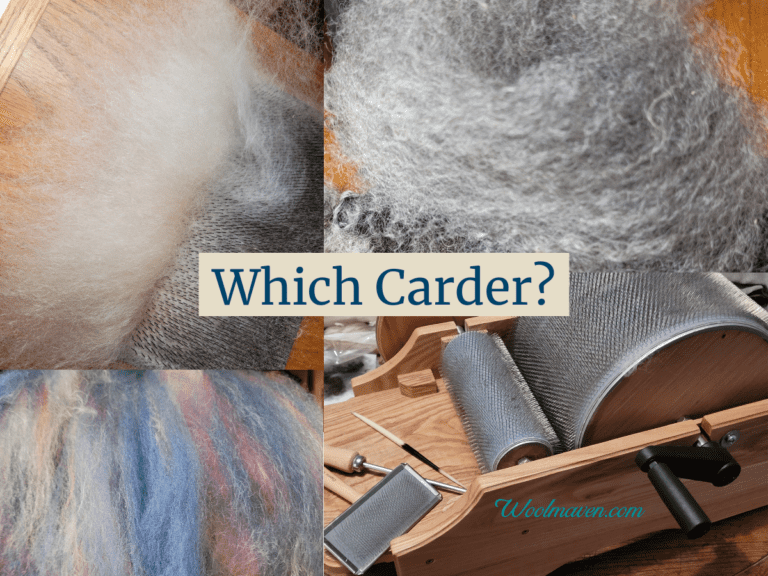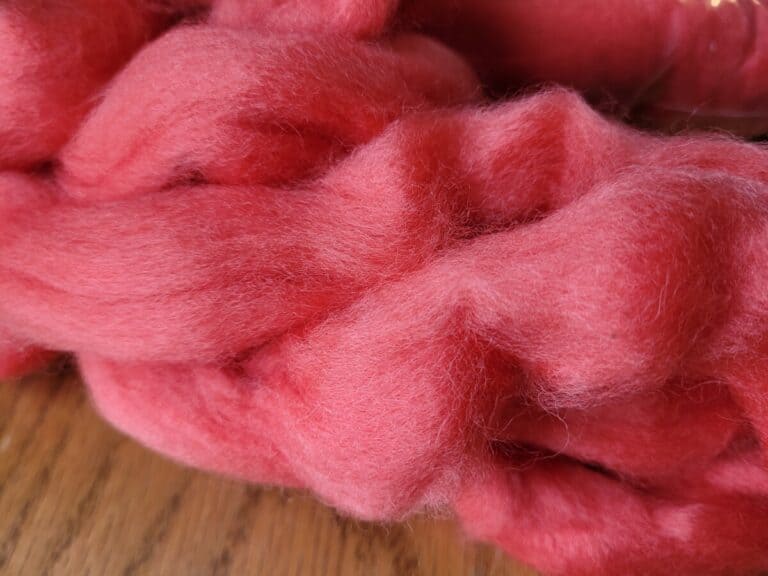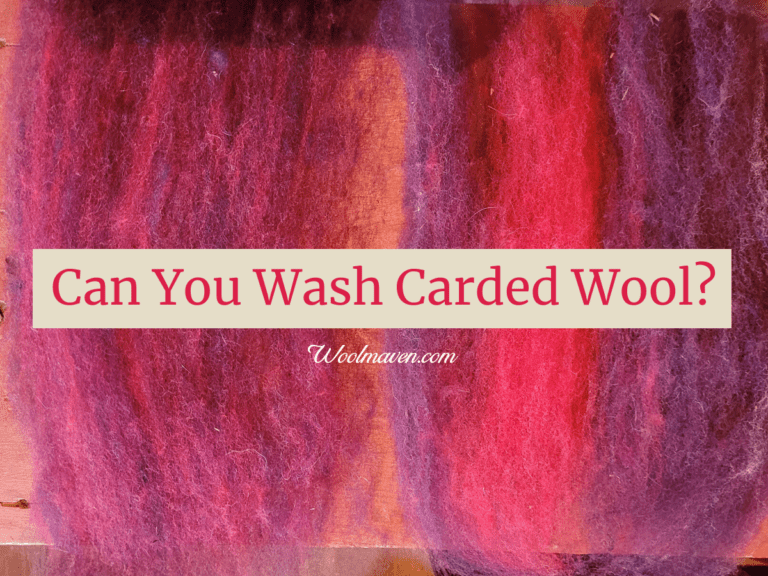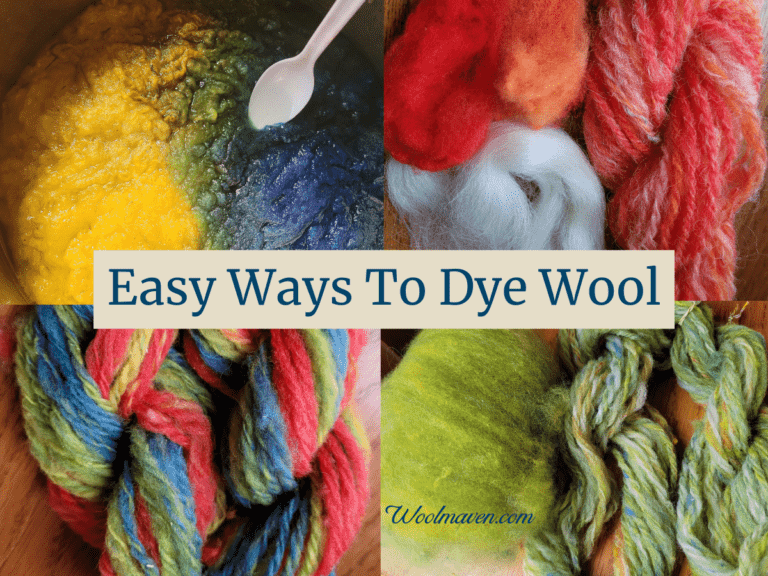Are Colored Sheep Fleeces Dyeable?
Everyone probably already knows that white fleeces are dyeable, how else do you get those crazy yarn colors and blends we all love? What about when you are not starting with white?
Can you dye previously dyed or even naturally colored fleeces or do you only get to add color to white wool one time and never to naturally colored wool?
Easy Ways To Dye Wool For Handspinning shows you your options for dyeing and when to use or not use each method.
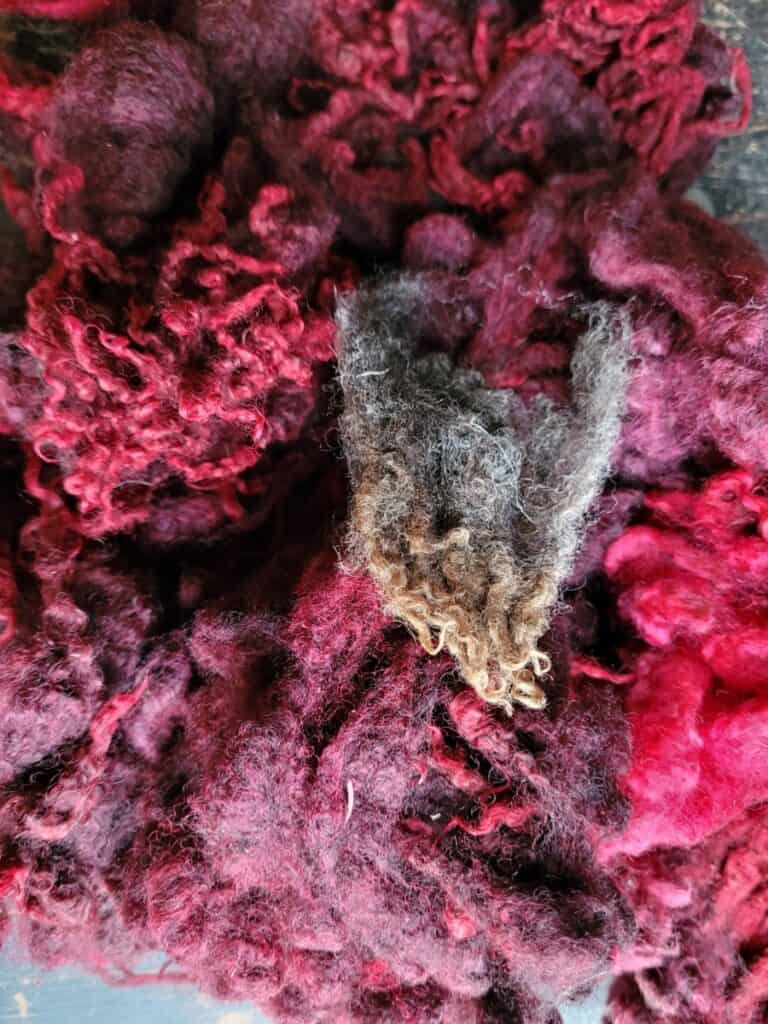
This post contains affiliate links, which means I receive commissions if you choose to purchase through links I provide (at no extra cost to you).
Over dye a naturally colored fleece
If you have a naturally colored fleece and you want to add a bit of color to your project, you can over dye the naturally colored fleece.
Of course, the darker the fleece, the darker the over dye needs to be to show up, but it is doable. Adding red to a brown fleece or purple to a grey would make neat colors to work with.
Since you are putting color over another, you won’t get the clear color you would get if you added that same dye to white wool, but that’s part of the interesting results.
Consider Zwartbles, if you are looking for an easy to spin, darker wool. It’s not super dark, but a nice brown and is quite spinnable.
Another place to use dye on a naturally colored fleece is if you have bleached tips in your wool.
Sometimes the color variation in neat, other times you may wish for a more solid color and dyeing the fleece to color correct the tips could be the ticket.
Bleached tips would also be a place to put in a bit of a highlight color to the fleece, without overpowering it.
For instance, you could add a bit of blue or red to tint the tips but not be enough to overpower the main color of the rest of the fleece.
7 Best Places To Get Wool gives you tips on sourcing fiber for your next project!
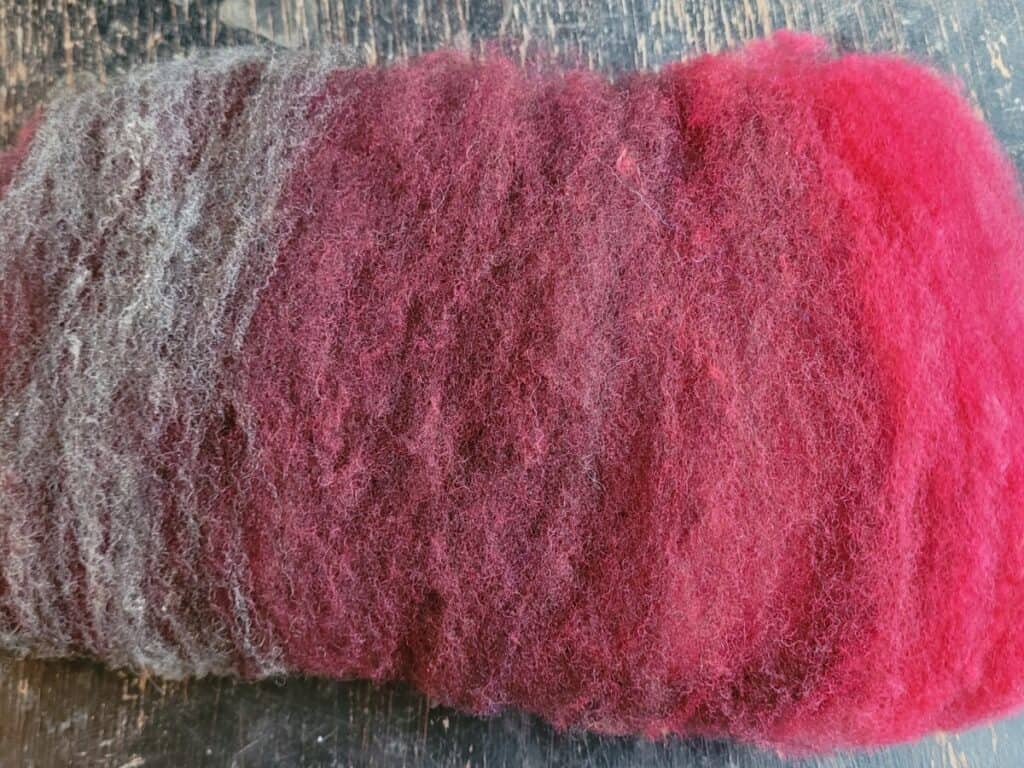
My experience over dyeing naturally colored wool
I have to admit, I’ve always thought that if you were lucky enough to have naturally colored wool, why on earth would you want to dye it? It’s lovely how it is!
While I still think that naturally colored wool is wonderful as is, my eyes have been opened to some new possibilities here with over dyeing colored fleeces.
Just to see how it would turn out, I dyed some of Blackie’s wool (that is really what we call her!) with some hot pink dye that I thought might look good with the dark brown of her fleece.
I’m impressed, so far, it looks really good. I hit it pretty hard with the dye, just to be sure that there was plenty in the dye bath, since I’m starting with a darker brown base.
I also put in a few extra glugs of vinegar to reduce the unexhausted dye going down the drain, but other than that dyeing went normally.
In case you are not familiar, this is the fleece of our one and only colored ewe. She typically has felted tips, a fair amount of VM (she’s a working gal on pasture) and a bit of white in a few spots.
I included some of the bleached ends and one of the white spots just to show what the color did on the entire staple as well as the white sections.
I love the results, the over dyed wool looks great! I’ll definitely be working more over dyed fleece into my projects from here out.
If you are doubting how you’ll like over dyed naturally colored wool, give it a shot on a small amount of fleece and see how you like it. I’ve been pleasantly surprised and you will be, too!
Dye a previously dyed fleece
You can also dye a previously dyed fleece.
Generally, there are two reasons for re dying wool, you had planned on it from the beginning or you need to because the colors turned out differently than you had hoped.
Over dye a previously dyed fleece
Over dyeing is dyeing a previously dyed fleece, this is the planned second dyeing step in your project.
Re dye a fleece
Another reason to add color to an already colored fleece is that you do not like the current color or it will not suit the project you have in mind.
I call this reason for dyeing color correction, meaning you like the fiber but don’t like the color, as is, however you have an idea of how you could change it into something you do like.
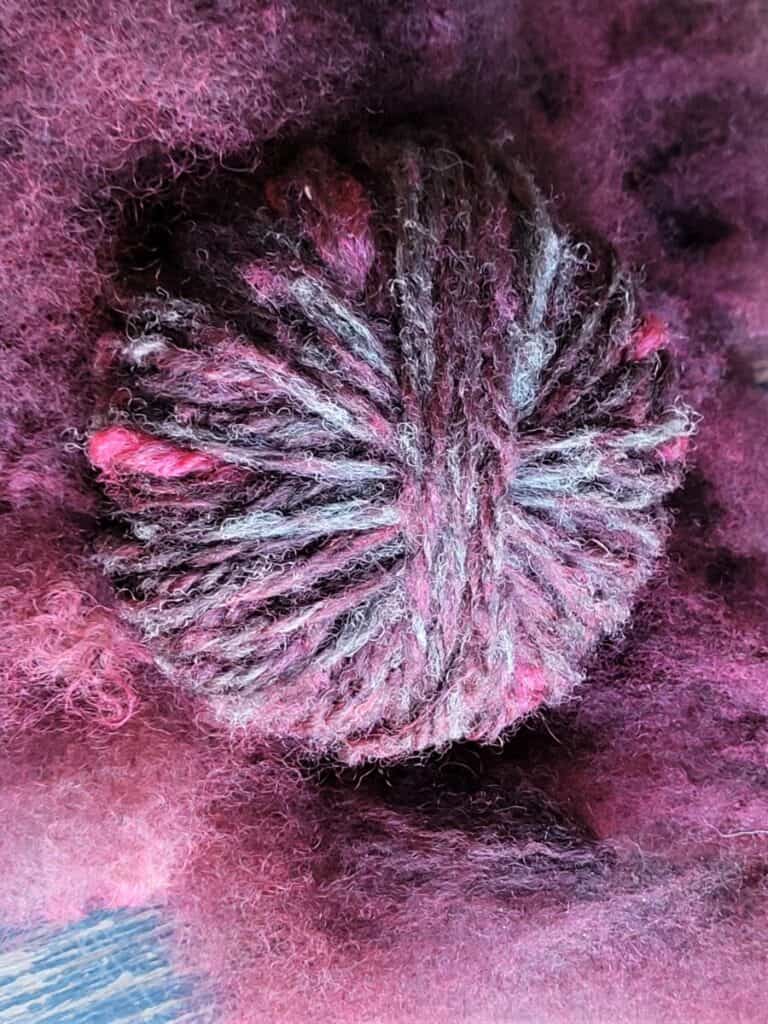
Dye to disguise stained wool
If you have purchased an entire fleece, you may have parts of the fleece that are still good fiber but are stained, usually a dirty yellow.
Great news, you can work with this fiber by re dyeing it to a color you like and get the full use out of the fiber you purchased.
Of course, the stained parts will never be able to be dyed a brilliant light color, the stain would affect the results, but if you went with a darker color the stain would not matter.
Use of stained then dyed locks
I like to add neat or unexpected colors to a bit of my spinning, just to see how the yarn ends up working out. I love to see the neat colorations and how the fibers blend.
You could dye your less than desirable wool to be one of these highlight or surprise additions to your spinning, just to make your yarn special and one of a kind.
Not to mention get some use out of a potentially hard to use part of your purchased fleece. To be clear, dyeing will not make junky fiber better, if the fiber is just stained, now you are talking!
My experience dyeing stained fiber
I purchased some white, grey and dark grey mohair straight from a small farm in Maryland. This is raw mohair, so there was a bit of sorting to do and, of course, the it needed to be washed.
The majority of the fiber was lovely and easy to use, but there were a few locks in the white fleece that looked dirty and ended up being stained, not just dirty.
No worries, these stained locks are great for adding into the dye pot when I am dyeing other projects.
I didn’t know if the dye would cover the stains, but I thought why not? I don’t really have anything to loose. The dye easily covered the stains and looked great for length of the fiber.
I like to chuck in a few lock of the stained mohair to build a selection of colored locks that I can add in as highlights to another project or as a subtle addition to a batt.
Mohair adds a bit of luster and takes dye really well, blending it in with other wool on the drum carder is easy and helps me customize my yarn!
You can dye stained locks or wool from any breed of sheep or other fiber animal, I just happened to have some mohair and loved the results.
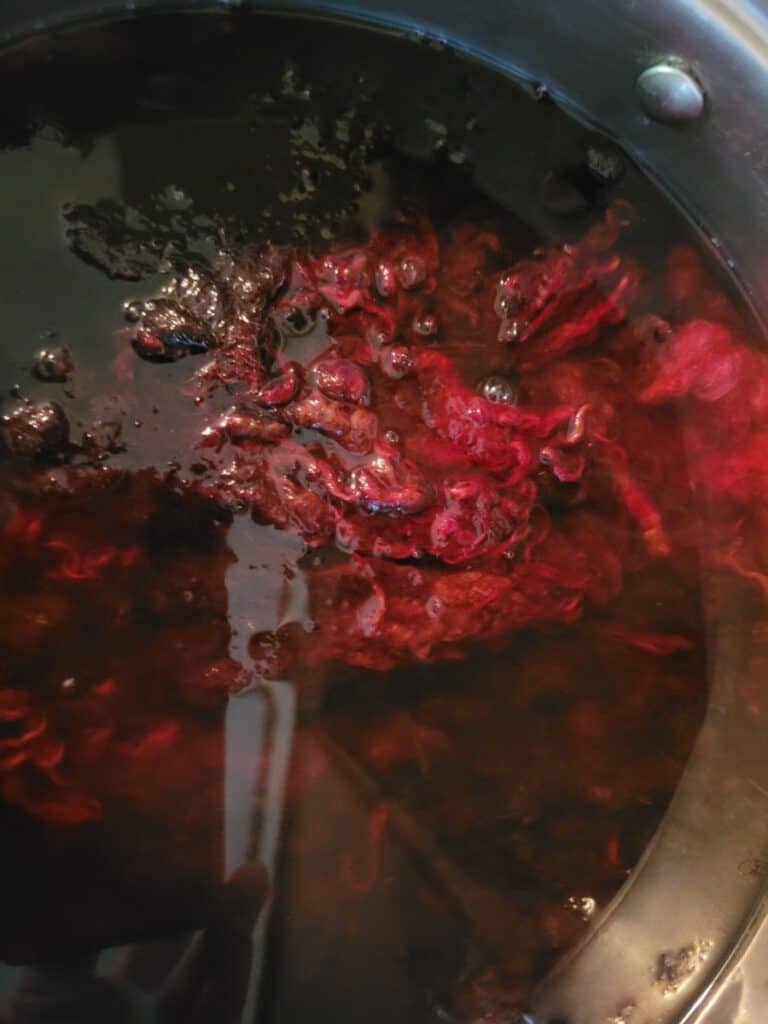
Which dye to use on wool
If you are poking around online, you’ll come across many options for dyeing your wool, but which ones are the best choice?
If you want a dye that lasts, you’ll need to use a commercially prepared acid dye. These colors will be rich, beautiful and long lasting. Choose powder or liquid dyes, which ever works for you.
I have some Rit that I got in town and it does an acceptable job, however, I prefer the powder dyes I have and will be buying more powdered dyes as I need colors replaced or added.
Food dyes do not last like acid dyes
Any type of food dye, things like Easter egg color, food coloring, drink mix packages, etc. will add color to your wool, for now. That’s the catch, the “for now” part.
What will happen is that the color from the food colorants will fade or wash out of the wool.
The other big thing to consider here is that if you are planning to dye over a color that is already on the wool, the food dyes will be less likely to give you the results you are looking for.
There are reasons you would want to use food colorants for dyeing wool, like helping kids learn more about woolcraft or to have a fun afternoon using things you have around the house.
That being said, if you want to use dye that gives you rich color that lasts, go with a dye made specifically for wool and other protein fibers.
If you are interested in learning more about natural dyes, read The Joy Of Handspinning’s Natural Dyeing which is a list of dyes and mordants that were used before modern acid dyes.

